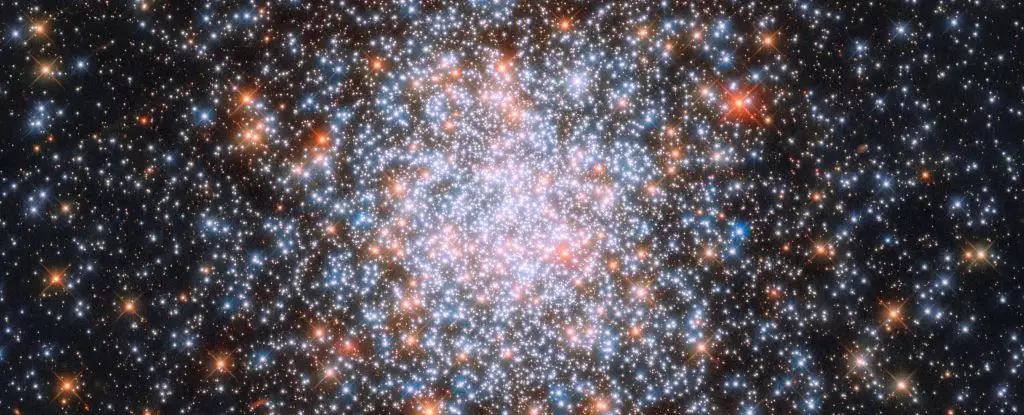The quest to understand the Universe’s infancy is one of the most profound scientific endeavors of our time. Hidden within the faintest whispers of ancient cosmic signals lies the potential to reveal the properties of the Universe’s earliest stars. These pioneering celestial bodies ignited roughly 100 million years after the Big Bang, serving as the Universe’s first sources of light. However, their physical characteristics and their impact on cosmic evolution remain enshrouded in mystery. Recent advancements in radio astronomy, highlighted by innovative research from the University of Cambridge and the Kavli Institute for Cosmology, offer a promising breakthrough: the ability to detect subtle fingerprints left behind by these ancient stars embedded in the cosmological 21-centimeter hydrogen line.
The Enigmatic Era of First Light
Following the Big Bang, the Universe was a dense, hot expanse dominated by ionized plasma. As it expanded and cooled, this primordial soup gave rise to neutral hydrogen, which saturated the cosmos in a cold, dark phase often dubbed the “cosmic dark ages.” During this time, stars had not yet ignited on a grand scale, leaving the Universe cloaked in darkness. The “cosmic dawn” refers to the epoch when the first generation of stars — the Population III stars — burst into life, dramatically altering the state of the cosmos. These stars arguably functioned as the Universe’s initial architects, initiating processes such as reionization and heavy element synthesis, thereby triggering subsequent cosmic structure formation.
Yet, despite their significance, directly observing these first stars has so far eluded astrophysicists. The chief obstacle lies in their nature: theoretical models suggest these primordial stars were extraordinarily massive, sometimes thousands of times the mass of our Sun, and sheer colossal size meant extraordinarily fleeting lifetimes measured in mere millions of years. Consequently, they would have vanished long before developing into the stellar populations we can detect today.
Decoding Cosmic Signals: The 21-Centimeter Line
A breakthrough in this cosmic detective work comes from an unlikely place — hydrogen’s 21-centimeter radio emission. This signal arises from quantum transitions within neutral hydrogen atoms, specifically the flipping of electron spins relative to the proton. Because neutral hydrogen was ubiquitous in the early Universe, the 21-cm line serves as a pervasive beacon, a cosmic background light that carries encoded information about hydrogen’s condition, density, and radiation environment from different eras.
The attractive feature of the 21-cm signal lies in its sensitivity to environmental changes induced by the first stars. Early stars emitted ultraviolet and X-ray radiation that influenced the hydrogen gas, altering its spin temperature and ionization state. Hence, measuring fluctuations in the 21-cm signal across different epochs effectively sketches a map of star formation and the energetic processes underway during the cosmic dawn.
The Role of X-rays and Stellar Masses in Shaping the Signal
Crucially, recent studies have gone beyond earlier models by incorporating the effects of X-ray binaries — powerful X-ray sources formed when massive first-generation stars collapsed into neutron stars or black holes. This aspect is non-trivial; the intense X-ray irradiation reshaped the surrounding hydrogen, modifying the resulting 21-cm signal in ways previous models did not fully capture.
The astrophysics team led by Thomas Gessey-Jones implemented sophisticated numerical simulations that integrate not just ultraviolet emissions, but also X-ray feedback, generating a more holistic portrait of the interaction between the first stars and their environment. Their findings demonstrated that varying stellar masses leave distinct imprints on the 21-cm line. In essence, by analyzing the shape and intensity of this signal, astronomers can infer the typical masses of these ancient stars — an essential parameter for understanding star formation in the pristine Universe.
This development holds immense promise. It means that when cutting-edge radio observatories, such as the Square Kilometer Array (SKA) and the Radio Experiment for the Analysis of Cosmic Hydrogen (REACH), begin collecting data, astronomers will have a robust theoretical framework to interpret the faint signals and confidently pinpoint the stellar origins of the features they observe.
Why This Matters: Rethinking the Dawn of the Universe
Understanding the mass range and radiation properties of the first stars is more than an academic exercise; it reshapes our narrative of cosmic evolution. Massive stars, through their short but energetic lives, dramatically influenced the heating, ionization, and chemical enrichment of the intergalactic medium. Their life cycles set the stage for galaxy formation and the eventual rise of complex chemical elements essential for planets and life.
By accurately characterizing these first light sources, we can better trace how the initial cosmic conditions evolved into the rich tapestry of the observable Universe today. More importantly, the refined models challenge previous oversimplifications that ignored the effects of X-ray binaries, potentially correcting longstanding misconceptions in early cosmic modeling.
Having such an integrated understanding underscores how interconnected cosmic phenomena are — the interplay of quantum atomic physics, stellar evolution, and large-scale cosmic expansion converges in a faint whisper from 13 billion years ago. As Eloy de Lera Acedo of Cambridge asserts, these insights mark a paradigm shift, offering unprecedented access to the Universe’s elusive first acts.
In my view, this approach exemplifies the transformative power of combining theoretical modeling with next-generation observational capabilities. The race to uncover the Universe’s infancy is accelerating, and with it, humanity’s grasp on our cosmic origin story becomes sharper, richer, and more inspiring.

